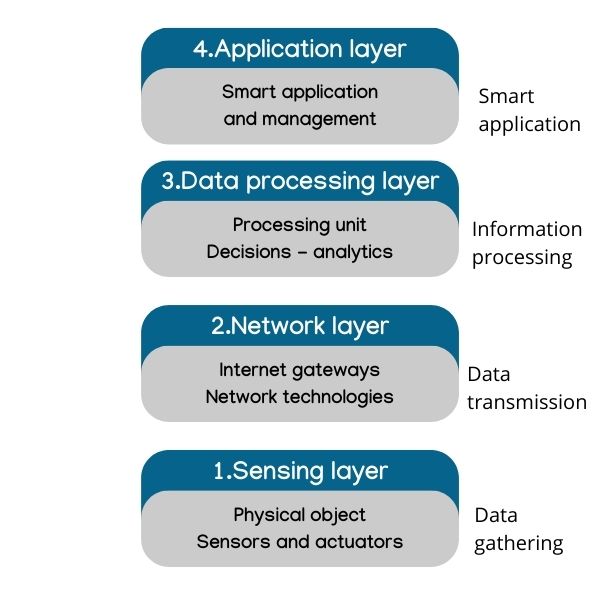What is IoT Architecture?
The Internet of Things (IoT) refers to the interconnection of various devices such as wearables, sensors, appliances, and other "smart" objects with the internet and each other. This allows these devices to collect, exchange, and act upon data, creating seamless automation and efficiency in day-to-day tasks. However, behind this simplicity lies a robust architectural framework that ensures smooth communication, data processing, and actionable insights.
IoT Architecture is the structured framework that defines how these interconnected devices operate, communicate, and process data. It consists of several components like sensors, actuators, protocols, cloud services, and more, organized into layers that enable efficient data flow, processing, and decision-making.

Layers of IoT Architecture
IoT systems are typically built on a layered structure that ensures functionality, scalability, and security. While the exact architecture may vary based on application areas, the widely accepted four-layer architecture includes the following:
1. Perception Layer (Sensing Layer)
This is the physical layer of IoT and forms the starting point of any IoT system.
- Consists of sensors, actuators, and devices.
- Captures data from the physical environment (e.g., temperature, humidity, motion).
- Sensors convert physical signals into digital data, while actuators perform actions like turning on/off appliances.
- Connectivity: Devices can connect wirelessly (Bluetooth, Wi-Fi) or through wired connections.
- Example: A temperature sensor measuring room temperature or a motion detector sensing activity.
2. Network Layer
This layer handles the transmission of data from the perception layer to processing units.
- Key Features:
- Components: Data Acquisition Systems (DAS), Internet/Network gateways.
- Performs data aggregation and conversion (e.g., analog to digital conversion).
- Manages device communication using protocols like MQTT, CoAP, or HTTP.
- Ensures connectivity between devices, servers, and networks.
- Example: A smart thermostat sending temperature data to a central hub via Wi-Fi.
3. Processing Layer (Edge Layer or Middleware)
Known as the brain of the IoT system, this layer manages, analyzes, and stores data.
- Key Features:
- Functions:
- Pre-processes and analyzes data locally (edge computing).
- Stores data in the cloud or on local servers for long-term use.
- Enables advanced analytics, machine learning, and decision-making.
- Edge IT: Handles some computations closer to the source to reduce latency and bandwidth usage.
- Example: Analyzing smart camera footage locally to detect intruders before sending alerts.
4. Application Layer
The topmost layer, focused on user interaction and delivering application-specific services.
- Key Features:
- Functions:
- Interfaces with users via dashboards, mobile apps, or web portals.
- Provides actionable insights and control mechanisms.
- Supports use cases across domains like smart homes, healthcare, and industrial IoT.
- Edge IT:
- Handles some computations closer to the source to reduce latency and bandwidth usage.
- Example: A mobile app allowing users to view energy consumption or remotely control home appliances.